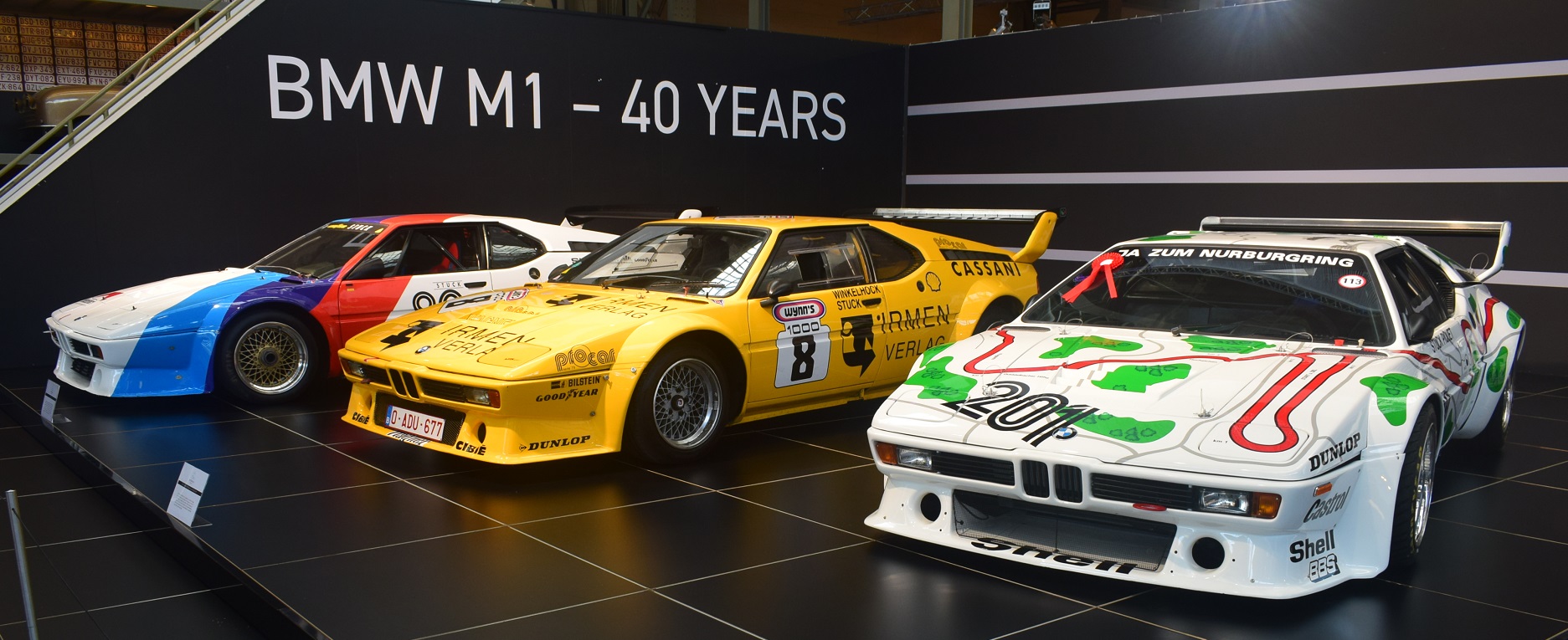BMW’s first true supercar celebrates its 40th birthday. The success of the Bavarian brand along with a surge in classic car culture gives ample opportunity to attend birthday parties for the M1. It was a featured car in BMW’s chambers at the Essen Techno Classica and at the same time, a dozen of them attended the Stuttgart Retro Classics.

As usual, the Belgian Autoworld Museum is up there again with a birthday package of 12 cars (seven road versions and five colourful and impressive race cars). The M1 was conceived with clear motorsport aspirations but also served to underpin BMW’s efforts to establish itself among the leading premium car manufacturers. While BMW enjoyed notable success in touring car racing, the high race car series required a relatively high number of series production cars for the homologation. The project to realise a feasible supercar from the 1972 Turbo X gullwing door concept, designed by Paul Bracq, however, suffered quite a few setbacks.

The penholder was BMW Motorsport division, but throughout the years, Lamborghini was replaced with German coachbuilder Baur, and the technical layout and specs also tried to follow the evolution of the homologation requirements. Thus the first M1s were handed over only by 1978. The final design was commissioned to Italdesign, and I believe, Mr. Guiggiaro delivered one of his finest work in his most impressive career.

The M1 was powered by a 3.5 litres four-valve 6-cylinder in-line petrol engine, and the road version delivers 204 kW (277 hp) with a maximum torque of 330 Nm. The M1’s impressive top speed of around 265 km/h made the BMW M1 the fastest German road sports car of the era.
In the end, nearly 460 BMW M1s were built in about a decade, mainly for the road, as it could not catch up with the changing requirements of the Group 4 homologation specifications.
Autoworld managed to secure 7 of these road legal versions, with a wide range of history and current residence from the US to Japan. Some of the seven road cars have a fascinating history, like the red M1 that was kept forgotten in an Italian garage for decades without ever being registered (never mind the stereotypes : ) ).
The race cars, however, have even more impressive histories to tell. In 1979, BMW called to life a championship using racing modified M1s, with a view to build enough M1s to enter the group 4 World Championship (after that the cars were used by private teams in the world championship and other series).
The Procar BMW M1 Championship was the entrée during Formula One racing days before the main event, and for that, it could include many Formula One drivers racing in identical cars. The series ran for two years, with Niki Lauda winning the 1979 season, and Nelson Piquet the 1980 season.
The Procar with the M coloured livery was driven by BMW Motorsport pilot Marcus Höttinger and later by Hans Stuck, it made its debut at Zolder, and was 3rd overall in the 1979 season. Since 1981, it participated in International and European Hillclimb races with notable success.
The one with the “Hugo Boss” livery driven by Jürgen Lässig competed in German Racing Trophy during 1981-1983 and in endurance racing in 1984-1986. Currently, it is competing in in historic racing since 2009.
The BASF was driven by Hans-Joachim Stuck, as was the white car with the Nürburgring livery (currently owned by Masakuni Hosobuchi, chairman of the BMW Club Japan) was driven by none less than three-time F1 champion Nelson Piquet and Hans-Joachim Stuck at the 1000km Nürburgring race.
FOR AN OVERVIEW OF ALL THE CAR MUSEUMS I EVER VISITED, CHECK OUT THE INTERACTIVE MAP:

